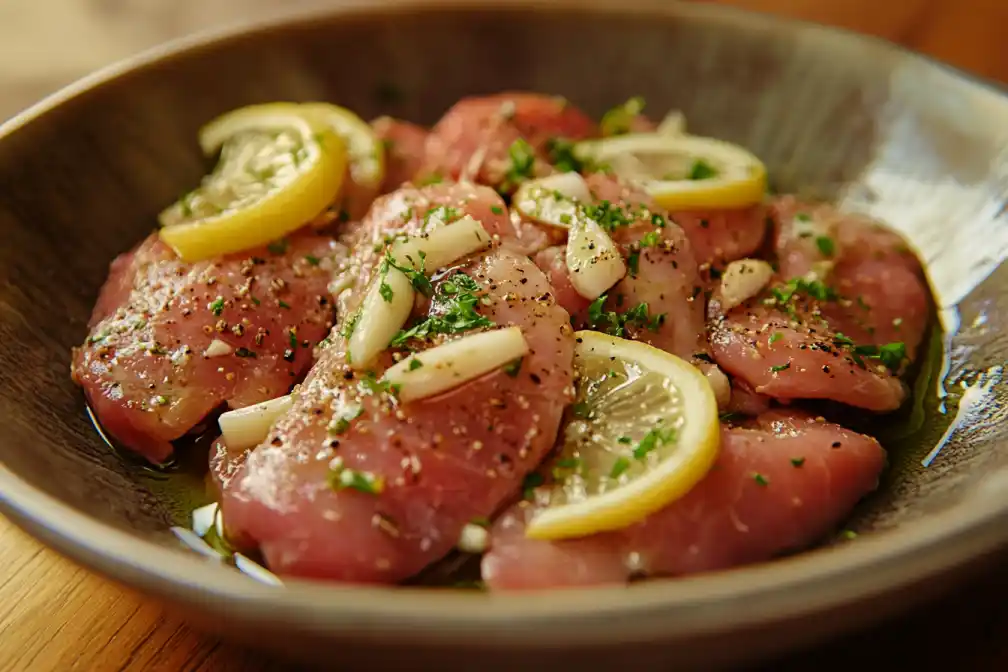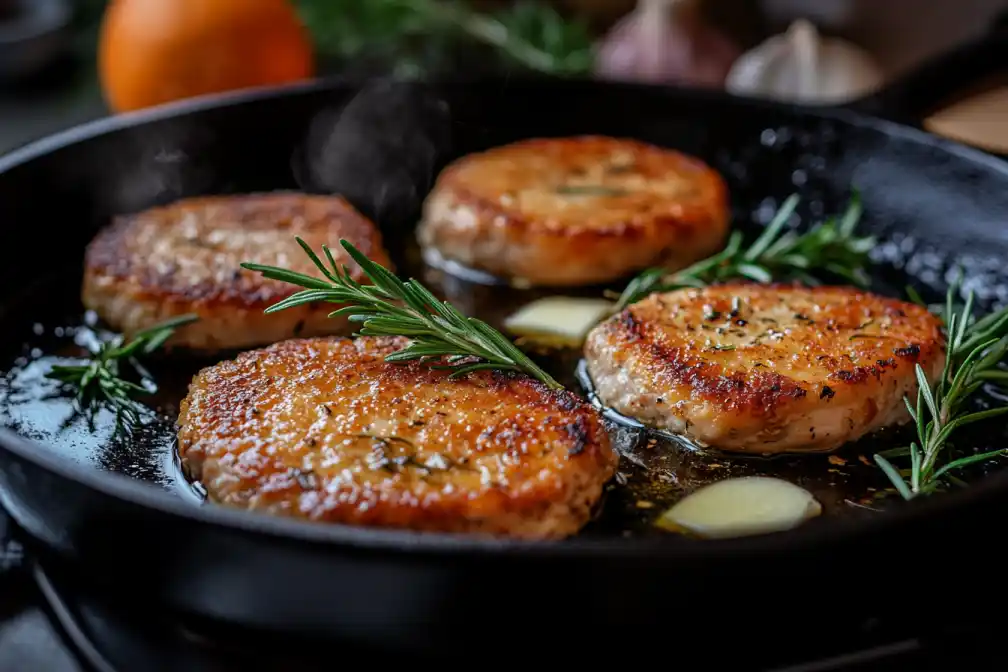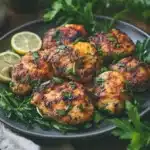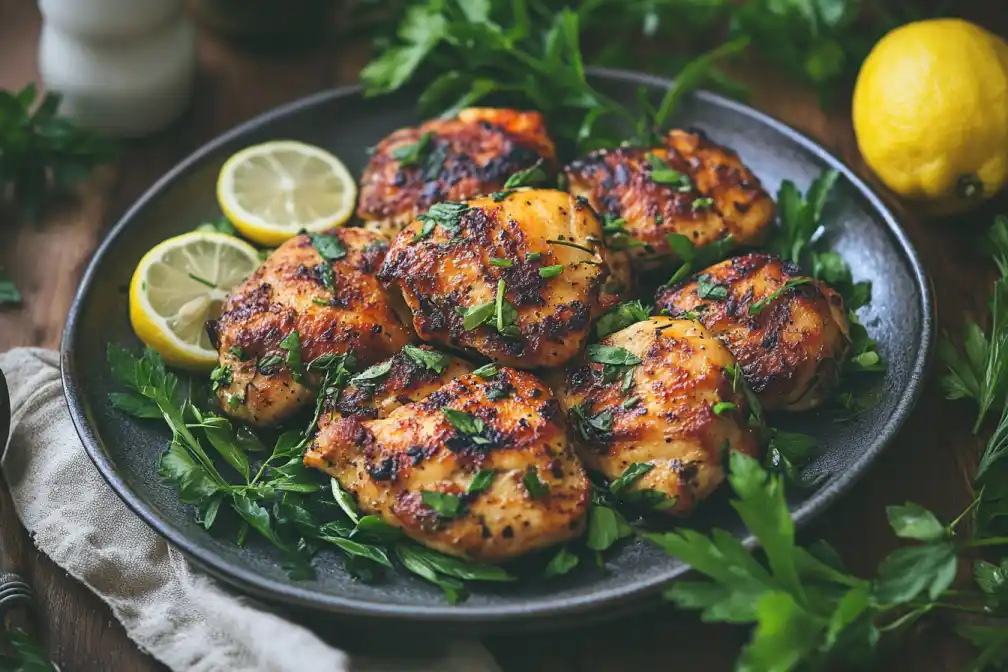How do you keep chicken cutlets from drying out? It’s a question almost everyone has asked at some point while cooking this kitchen staple. Chicken cutlets are a quick and convenient option, but their thin nature makes them notorious for losing moisture during cooking. If you’ve ever wondered how to prevent dry, rubbery chicken, you’re not alone.
Table of Contents
The Basics of Juicy Chicken Cutlets
Understanding Chicken Cutlets and Their Cooking Challenges
Chicken cutlets are a quick and versatile protein option that’s a staple in many kitchens. They’re thinly sliced pieces of chicken breast, perfect for everything from weeknight meals to fancy dishes. But here’s the rub: their very nature makes them prone to drying out. Why? Because they cook so fast!
Think of chicken cutlets like a sponge. Without enough prep, they can lose their moisture almost instantly. And let’s be honest: no one likes chewing on a dry, rubbery piece of chicken. The key is mastering the preparation and cooking process to lock in all that juicy goodness.
Why Do Chicken Cutlets Often Dry Out?
Ever wonder why your cutlets don’t turn out as tender as you hoped? The main culprits include:
- Thin slices: While thin cuts cook faster, they’re also more prone to overcooking.
- Lack of moisture: Without marination or brining, chicken cutlets don’t retain enough natural juices.
- High heat: Excessively high temperatures can zap the moisture right out.
“Cooking chicken cutlets is an art that balances speed and precision. Nail these two, and your cutlets will never disappoint!”
Preparation Techniques for Moist Chicken Cutlets
Selecting the Right Chicken Cutlets
It all starts with quality. Look for fresh, organic chicken breasts if you can. Why? Organic chicken tends to have better flavor and texture. Ensure they’re evenly sliced—uneven cuts mean uneven cooking, which can lead to dryness. If the store-bought pieces aren’t consistent, don’t hesitate to flatten them with a meat mallet.
The Importance of Proper Tenderizing
Tenderizing isn’t just about making the meat thinner; it’s about softening the fibers so they absorb more flavor. A few gentle whacks with a mallet, and you’re on your way to chicken heaven. Think of this step as priming a canvas before you paint!
A Key Step to Retain Juiciness

Marination is like giving your chicken a luxurious spa treatment. A simple mix of oil, acid (like lemon juice or vinegar), and seasonings does wonders. Why? The acid breaks down the proteins slightly, making the meat more tender, while the oil helps lock in moisture.
Pro tip: Let your cutlets marinate for at least 30 minutes, but overnight is even better!
Using Brining to Prevent Dryness
Don’t skip brining if you’re serious about juicy chicken. A saltwater brine works like magic by helping the meat retain its natural juices. For added flavor, toss in some herbs, garlic, or even a splash of apple cider. Just 15-20 minutes in the brine can make all the difference.
| Ingredients | Quantity |
|---|---|
| Water | 4 cups |
| Salt | 2 tablespoons |
| Sugar | 1 tablespoon |
| Garlic (minced) | 2 cloves |
Best Cooking Methods to Avoid Dry Cutlets
Searing for Sealed-in Moisture

Here’s a trick: start with high heat. Searing the cutlets for just a minute or two on each side creates a flavorful crust while locking in the juices. After that, reduce the heat to cook them through gently. It’s like giving your cutlets a warm hug they’ll thank you by staying moist!
Baking vs. Pan-Frying: What Works Best?
There’s no one-size-fits-all answer here. Baking is perfect for hands-off cooking and even heat distribution. Pan-frying, on the other hand, gives you that golden, crispy exterior that’s irresistible. Whichever method you choose, don’t forget to preheat your oven or pan it’s the secret to avoiding sticking and uneven cooking.
The Role of Temperature Control
A meat thermometer is your BFF in the kitchen. Chicken should reach an internal temperature of 165°F (74°C). Any higher, and you risk drying it out. And no, poking the chicken with a fork isn’t a reliable test it just lets the juices escape!
Timing: Cooking Cutlets to Perfection
Chicken cutlets cook fast usually in 5-7 minutes per side, depending on thickness. Overcooking by even a minute can result in dryness. So, keep a timer handy and don’t walk away from the stove. Multitasking? Not today!
Common Mistakes That Lead to Dry Cutlets
Overcooking: The Number One Culprit
We get it, you want to make sure your chicken is cooked through. But overcooking is the easiest way to suck the life out of your cutlets. Use a thermometer and trust it—don’t eyeball it!
Skipping Pre-Cooking Preparation
Remember those steps like tenderizing and marinating? Skipping them is like trying to bake a cake without flour. Sure, you’ll end up with something, but it won’t be great.
Ignoring Resting Time After Cooking
Once your cutlets are off the heat, let them rest for a few minutes. Why? It allows the juices to redistribute. Slice too soon, and all that deliciousness ends up on the cutting board instead of in your mouth.
Enhancing Flavor While Keeping Cutlets Juicy
Incorporating Butter and Oil for Moisture Retention
When in doubt, add butter. Seriously, a little butter or oil during cooking can make a world of difference. It not only adds richness but also helps keep the chicken moist.
Using Sauces and Gravy as Moisture Enhancers
Serving your chicken with a flavorful sauce is like pairing a great outfit with the perfect accessory. A creamy mushroom sauce or tangy marinara can take your cutlets from “meh” to “marvelous” while keeping them juicy.
Stay tuned for Part 2 where we’ll dive into tools, troubleshooting, and FAQs to ensure you’re always serving perfectly juicy chicken cutlets!
Tools and Equipment for Perfectly Cooked Cutlets
The Role of Non-Stick and Cast-Iron Pans
The pan you use can make or break your chicken cutlets. Non-stick pans are ideal for beginners because they prevent sticking (duh!). On the other hand, cast-iron pans offer unparalleled heat distribution, giving your cutlets a beautiful golden sear. Choose your weapon wisely depending on the result you’re aiming for.
Pro tip: Always preheat your pan before adding the chicken. This ensures even cooking and helps lock in moisture.
Meat Thermometers: Your Best Friend for Accuracy
If you’ve ever played the “is-it-done-yet?” guessing game, you need a meat thermometer in your life. These handy tools take the guesswork out of cooking, ensuring your chicken is perfectly done—no more, no less. Stick it into the thickest part of the cutlet, and when it hits 165°F (74°C), you’re golden!
Troubleshooting: Salvaging Dry Chicken Cutlets
Adding Moisture Post-Cooking
Oops, overcooked your cutlets? Don’t panic! A quick fix is to add some broth, butter, or sauce to the pan and let the cutlets simmer for a minute or two. It’s like giving them a little drink to perk them up. Not perfect, but definitely better than serving them bone-dry.
Alternatively, slice the chicken thin and toss it into a salad or sandwich with plenty of dressing or condiments. No one will notice it’s a bit dry with all those other flavors in the mix.
Creative Recipes to Repurpose Dry Cutlets
Turn your mistake into a masterpiece with these ideas:
- Chicken Alfredo: Toss sliced cutlets into a creamy Alfredo sauce and serve over pasta.
- Chicken Tacos: Shred the chicken, add taco seasoning, and load it into tortillas with guac and salsa.
- Chicken Soup: Cube the cutlets and let them soak in a hearty broth with veggies.
“A dry cutlet is just a blank canvas for your next creative culinary adventure!”
FAQs
u003cstrongu003eHow do you keep chicken cutlets from drying out?u003c/strongu003e
The best way to keep chicken cutlets from drying out is to focus on preparation and cooking techniques. Marinating or brining adds moisture before cooking, while using moderate heat and proper timing ensures the cutlets don’t overcook.
u003cstrongu003eWhy do my chicken cutlets always dry out?u003c/strongu003e
Chicken cutlets dry out when they’re overcooked or cooked at too high a heat. Thin cuts lose moisture quickly, so techniques like brining or searing can help lock in the juices.
u003cstrongu003eCan baking help keep chicken cutlets moist?u003c/strongu003e
Absolutely! Baking chicken cutlets at a controlled temperature can retain moisture if paired with a marinade or a light coating of oil. For more inspiration, check out these u003ca href=u0022https://majesticrecipes.com/crispy-healthy-baked-chicken-cutlet-recipes-youll-love/u0022u003eCrispy u0026amp; Healthy Baked Chicken Cutlet Recipesu003c/au003e.
u003cstrongu003eHow do you keep chicken cutlets from drying out in the oven?u003c/strongu003e
To prevent dryness in the oven, use a marinade or breading that retains moisture, and avoid overcooking. Bake at 375°F (190°C) for the best results, checking the internal temperature to reach 165°F (74°C).
Mastering the Art of Moist Chicken Cutlets
Keeping chicken cutlets from drying out isn’t rocket science it’s about understanding the basics, prepping like a pro, and cooking with care. Whether you’re brining, marinating, or searing, every little step adds up to delicious, juicy results. And hey, even if things don’t go perfectly, there’s always a way to save the day with a sauce or a creative recipe.
Print
Juicy Chicken Cutlets
- Total Time: 55 minutes
- Yield: 4 servings 1x
- Diet: Poultry
Description
Master the art of keeping chicken cutlets juicy and tender with these proven techniques and preparation methods.
Ingredients
- 4 cups water
- 2 tablespoons salt
- 1 tablespoon sugar
- 2 cloves garlic, minced
Instructions
- Prepare a brine with water, salt, sugar, and minced garlic. Allow the chicken cutlets to brine for 15-20 minutes.
- After brining, tenderize the chicken cutlets by lightly pounding them with a meat mallet.
- Marinate the chicken cutlets for at least 30 minutes before cooking. Use a mixture of oil and an acid like lemon juice.
- Preheat a non-stick or cast-iron pan over medium-high heat.
- Sear the cutlets for 1-2 minutes on each side until golden brown.
- Reduce the heat and continue to cook until the internal temperature reaches 165°F (74°C).
- Let the cutlets rest for a few minutes before slicing to allow juices to redistribute.
Notes
Use high-quality, organic chicken for the best flavor and texture. Don’t skip marination or brining for optimal moisture retention.
- Prep Time: 45 minutes
- Cook Time: 10 minutes
- Category: Main Course
- Method: Searing
- Cuisine: American
Nutrition
- Serving Size: 1 serving
- Calories: 350
- Sugar: 5g
- Sodium: 400mg
- Fat: 12g
- Saturated Fat: 4g
- Unsaturated Fat: 6g
- Trans Fat: 0g
- Carbohydrates: 45g
- Fiber: 3g
- Protein: 15g
- Cholesterol: 30mg

